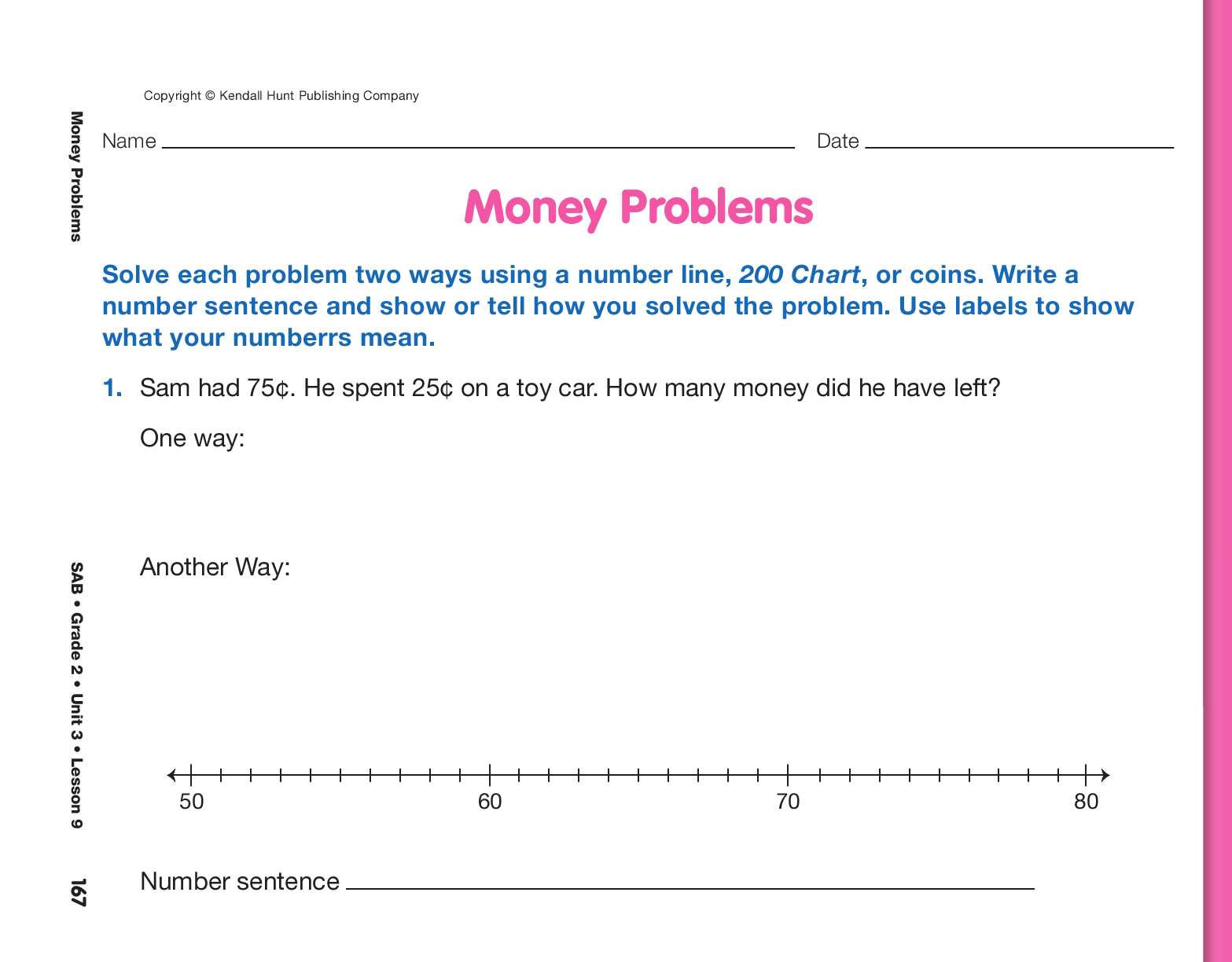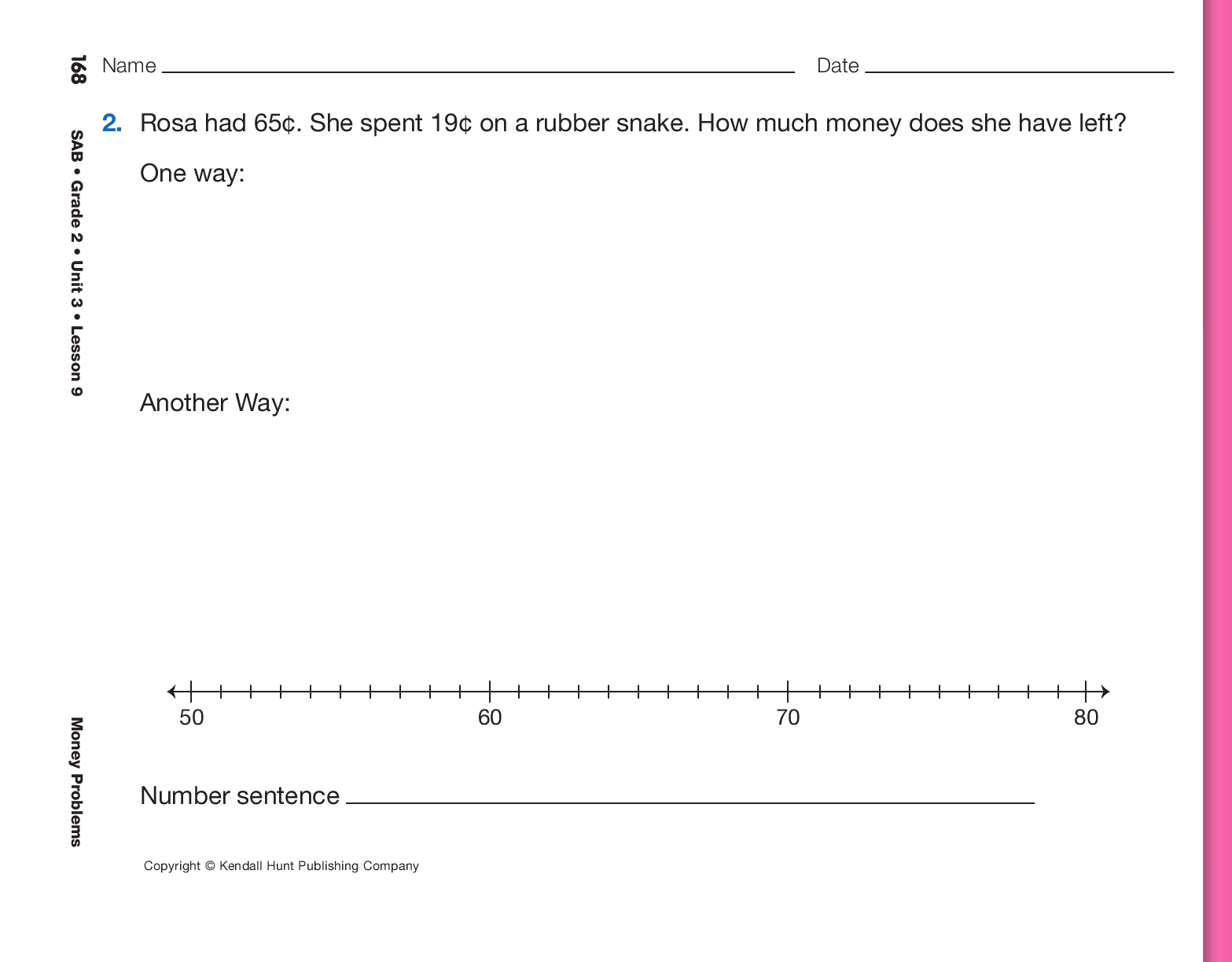Display and direct students’ attention to the Math Practices page in the Student Activity Book
Reference section. Explain to students that they will
be answering some questions on the Money Problems pages in the Student Activity Book.
In
order to do their best work, they should think about
the following Math Practices:
- Good problem solvers choose good tools and
strategies [MPE2]. What are some tools we have
been using to solve money problems? (number
lines, 200 Charts, coins, drawings)
- You will solve each problem two ways. How does
this help you? Which Math Practices Expectation
am I thinking about? (You can see if your problem
makes sense when you solve it a second time and
if it doesn’t, you can try it again. MPE3, Check
for reasonableness.)
- You will need to show your work clearly so that
others can understand your thinking [MPE5] and
include labels so we know what your numbers
mean [MPE6]. Look at the questions. What label do
you think you will use? (cents)
Ask students to complete the Money Problems page.
Have number lines, 200 Charts, and coins readily
available.

Use the Money Problems page with the Feedback Box in the
Student Activity Book to assess students’ abilities to: identify,
describe, and use patterns on the 200 Chart and number line
[E1]; connect representations of quantities using number
lines, 200 Charts, and number sentences [E2]; represent
subtraction using multiple representations (e.g., counters,
drawings, number sentences, number lines, 200 Chart) [E3];
find a strategy to solve problems [MPE2]; check solutions
for reasonableness [MPE3]; explain solution strategies
[MPE5]; and use labels to show what numbers mean
[MPE6].
To provide targeted practice with representing addition using
number sentences, place copies of the Spin and Add pages
from the Student Activity Book, and clear spinners or paper
clips and pencils in a learning center so that students can
play the game. Provide access to a collection of coins and
number lines.















